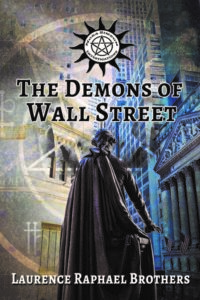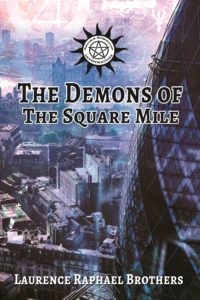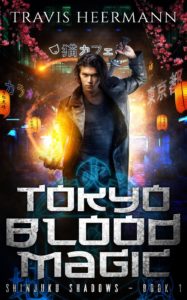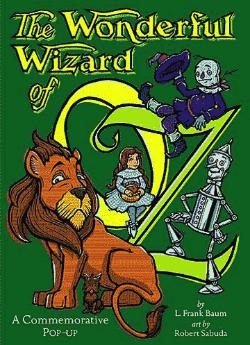
It doesn’t take any very profound insight to see that the roles nonhumans play in speculative fiction are often stand-ins for humans. In first-intention and unselfaware work (two very different things, see below), nonhumans are often monstrous and hostile. They frequently stand in lieu of othered humans who the writer might think it improper to name directly, or for that matter who the writer is intentionally dogwhistling by associating their secondary attributes with the negative qualities that racism and other forms of bigotry have painted for them.
And yet there are dangerous animals and people in our world who are hostile, sometimes implacably hostile and deadly dangerous, and in principle there should be nothing wrong with embodying these figures in fantastic fiction, even in pared down and totally inhuman forms from which all other qualities but their monstrousness have been flensed. In real life, sharks and venomous snakes and grizzly bears are not generally malicious, and their relative danger is far inferior to that of automobiles, diseases, and police officers. But in fiction, does it do any harm to pretend they are terrible threats? As always, the answer is yes, and no, depending on technique and presentation.
 The trope-subversive reaction to monster stories generally involves their humanization. The dragon-viewpoint story that sees the questing knight as a villain, the sympathetic look at a fallen angel’s rebellion, the AI who comes to life only be oppressed and treated as a thing by their creator, the alien whose attempts to help humanity are viciously rebuked: all these acknowledge the base form of the monster story and turn it on its head. In many cases, the inversion is charmingly, touchingly, and effectively achieved, but again the final result depends on the author’s insight and skill, not just the fact of the reversal.
The trope-subversive reaction to monster stories generally involves their humanization. The dragon-viewpoint story that sees the questing knight as a villain, the sympathetic look at a fallen angel’s rebellion, the AI who comes to life only be oppressed and treated as a thing by their creator, the alien whose attempts to help humanity are viciously rebuked: all these acknowledge the base form of the monster story and turn it on its head. In many cases, the inversion is charmingly, touchingly, and effectively achieved, but again the final result depends on the author’s insight and skill, not just the fact of the reversal.
So what makes a monster story good or bad, or for that matter, a monstrous-sympathy or anti-monster story? In a word, understanding. In The War of the Worlds, H.G. Wells had two objectives: first to present the visceral fear of the monster to his reader, the overwhelming power of an implacably hostile foe whose strength cannot be contested. But he also wanted to present his idea of what indigenous populations such as the Tasmanians must have experienced when British colonial military forces invaded. There’s no characterization of the Martians in Wells’ book. They’re apparently trying to seize terrestrial resources, but it’s not as if they twirl their mustachios and speechify to a captive audience. They just do their thing, obliterating any opposing military forces and casually wiping out civilians who are in the way until finally they’re overcome by terrestrial disease. (This last is so that for Wells’ didactic purposes, something like the status quo can be regained, with a cautionary warning.) This is an example of a “first-intention” monster story that is nevertheless self-aware; the monsters are simple to the point of being simplistic and more or less incomprehensible, but their action and the reason for their action is based on the writer’s understanding of humanity and his hope to prevent his own people from adopting the monstrous role of his Martian invaders.
Must a good monster story always be intellectualized? Not at all, hopefully needless to say. Consider Beowulf, another first-intention story, and this one with probably considerably less deliberate auctorial intention behind it. In this story, Beowulf is a pure hero, and both Grendel and his mother are pure monsters, though the mother’s desire for revenge is only natural, and this serves in some way to humanize her. But I shouldn’t leave the reader with the idea that self-awareness and understanding are modern qualities, and that older works are necessarily simpler, more direct, and more “primitive.”
One can see some very profound self-awareness in the nameless author of the Gilgamesh epic, who takes the monstrous and frightening foe Enkidu (created by the gods to give Gilgamesh someone to fight because he’s been ruining his own subjects’ lives) and turns him into a sympathetic friend. Along with the wild and uncivilized Enkidu (humanized through sleeping with a priestess of Inanna), and apparently as a result of their coming together, Gilgamesh matures from a boorish and casually destructive youth into a mature, responsible, and reflective adult. With its transformation of Enkidu from monster into a friend so intimate as to be closer than most lovers[1], the epic’s attitude may seem implausibly modern, except of course that our intuitive notions of what constitute “modern” and “primitive” are wildly biased in our own favor. Coming thousands of years before most classic western monster stories, the transformative early section of the Gilgamesh epic (the latter half mainly involves Enkidu’s death due to Gilgamesh’s arrogance, and Gilgamesh’s futile quest to resurrect his fallen friend) illustrates that anti-monster stories are at least as old and as essential.
Man, I hope all that didn’t come off as too pompous, or too obvious either. In my own stories, I most often do the inversion thing, but I have the deepest respect for people who can write first-intention monster stories without dehumanizing the antagonists or deliberately or unconsciously linking their monsters to othered humans in the real world.
But that’s a tough thing to pull off. In my stories, the apparent monster is frequently your friend, and the real monster is another human, or perhaps the social forces that move humans to act monstrously. For me, that kind of story is much easier to write.
 My romantic noir urban fantasy series beginning with The Demons of Wall Street (Mirror World Publishing, 2020) and in its recent sequel The Demons of the Square Mile (Mirror World Publishing, 2021) features demons who are indeed monstrous in many respects, due to the horrible ecology and social forces of their native world. But they’re also oppressed slaves summoned and bound by financial industry banker-sorcerers who want to exploit their precognitive abilities to manipulate markets. Some of these demons are true to type, but others are capable of defying and transcending their origins to become people more capable of kindness and compassion than the abusive humans who summon and bind them. The real monster is late-stage capitalism; but I guess that’s either trite or obvious, depending on your point of view.
My romantic noir urban fantasy series beginning with The Demons of Wall Street (Mirror World Publishing, 2020) and in its recent sequel The Demons of the Square Mile (Mirror World Publishing, 2021) features demons who are indeed monstrous in many respects, due to the horrible ecology and social forces of their native world. But they’re also oppressed slaves summoned and bound by financial industry banker-sorcerers who want to exploit their precognitive abilities to manipulate markets. Some of these demons are true to type, but others are capable of defying and transcending their origins to become people more capable of kindness and compassion than the abusive humans who summon and bind them. The real monster is late-stage capitalism; but I guess that’s either trite or obvious, depending on your point of view.
The main character in this series, occult PI Nora Simeon, is a deeply traumatized and alienated person, in danger of becoming a moral monster herself by dint of her isolation and lack of empathy. She starts the first book convinced that demons are essentially evil and destructive (note in the books they are beings from an alien realm of existence, not fallen angels). She soon learns that just like with humans, these qualities are contingent, not essential, and in the usual moral fashion, the worst monsters are those we make of ourselves. And with the help of her unusual friend and lover Eyre (met in the first book and becoming a Thin-Man-style romantic and professional partner thereafter) she wrenches herself free from her downward spiral; it’s not an easy thing to do, and it will take her the full arc of the series to become truly free, but like the rest of us, all she can do is take the next step. My own next step is tentatively titled The Demons of Chiyoda, a just-completed first draft that I’m getting ready to submit to my publisher. In the meantime, I hope you’ll take a look at the first two entries in the series, available in paper or ebook direct from the publisher as well as from most online bookstores.
[1] I suspect this to have been the first ship in history, and that therefore the epic of Gilgamesh could be the first example of fan fiction, too.
 BIO: Laurence Raphael Brothers is a writer and technologist. He has worked in R&D at such firms as Bell Communications Research and Google, and he has five patents along with numerous industry publications. His areas of expertise include Internet and cloud-based applications, artificial intelligence, telecom applications, and online games. He has published many science fiction and fantasy stories and is a member of Science Fiction and Fantasy Writers of America. Find out more about Laurence Raphael Brothers on his website.
BIO: Laurence Raphael Brothers is a writer and technologist. He has worked in R&D at such firms as Bell Communications Research and Google, and he has five patents along with numerous industry publications. His areas of expertise include Internet and cloud-based applications, artificial intelligence, telecom applications, and online games. He has published many science fiction and fantasy stories and is a member of Science Fiction and Fantasy Writers of America. Find out more about Laurence Raphael Brothers on his website.
If you’re an author or other fantasy and science fiction creative, and want to do a guest blog post, please check out the guest blog post guidelines. Or if you’re looking for community from other F&SF writers, sign up for the Rambo Academy for Wayward Writers Critclub!
...
Back when I was living in Japan, about 2003-2006, one of the foods that I fell in love with was nikuman 肉ã¾ã‚“, steamed pork buns. They could be found in any convenience store, and they made a great meal for someone who didn’t feel like cooking.
 They come with various fillings: pork, beef, chicken, shrimp, veggie, even sweet custard. They are particularly comforting when the weather turns chilly and they’re all steamy and warm.
They come with various fillings: pork, beef, chicken, shrimp, veggie, even sweet custard. They are particularly comforting when the weather turns chilly and they’re all steamy and warm.
I was planning a vacation to Japan with the family in March 2020. We’d been planning it for years, and it would have been the first time I’d been back since returning to the States. I was excited to show my family, whom I didn’t have then, all the sights.
A secondary reason for going to Japan was professional, as I was in the midst of writing Tokyo Blood Magic, the first volume of my Shinjuku Shadows trilogy. I wanted to visit some important Tokyo locales, refresh my memory, gather some inspiration, but it was not to be.
As you might guess, COVID-19 derailed that, four days before wheels up for Tokyo. I was crushed, and nine months of isolation has not done much to help that state of mind.
Nevertheless, writing the book did assuage some of my disappointment, as I spent a lot of time in Google Street View, walking virtually around the streets of Tokyo. Writing the book was a fun way to reminisce, and also learn about places I didn’t get to visit while I was living there, such as Shizuoka, Ginza, and Roppongi.
There’s a scene in Tokyo Blood Magic where our hero, Django Wong, a ninja warlock, has his bacon saved from a very dangerous monster by a wisecracking alley cat, known only as Cat. Cat, however, is far from normal, and it’s not clear exactly what he is until Book 2, Tokyo Monster Mash.
Amid snarky repartee, Django and Cat venture into a convenience store for some post-fracas grub, where nikuman becomes a big part of their bonding. Cat becomes Django’s supernatural sidekick.
So in this Year of a Thousand Cuts, I wanted some comfort food for the Virtual Book Launch Party, which my wife and I put together over Zoom a couple of weeks after Tokyo Blood Magic was released. So I made some nikuman, and this video tells the tale so much better than text.
This recipe is adapted from Japanese measurements. Credit for the original goes to Namiko Chen.
Note: If you like big buns, and you cannot lie, you can cut your dough into larger sizes and use more filling for each one.
The result: they were delicious.
The texture of the bun was a little bit off, maybe because I missed a couple of steps with letting the dough rest. Another reason might be because I live in the Denver area, and altitude can certainly affect cooking and baking in unexpected ways, which I didn’t account for in my procedure.
Cooking is much like magic and writing. A little here, a little there, bits and pieces of accumulated experience and creative wisdom.
I hope you’ll give this recipe a try for yourself. If you do, let me know how it goes. Going into the Winter of COVID, maybe we’ll all need a little more comfort food.
 Bio: Freelance writer, novelist, editor, and screenwriter, Travis Heermann is the author of nine novels, including Tokyo Blood Magic, The Hammer Falls, The Ronin Trilogy, and others, plus short fiction in Apex Magazine, Cemetery Dance, and many more. His freelance work includes contributions to the Firefly Roleplaying Game, Battletech, Legend of Five Rings, and EVE Online.
Bio: Freelance writer, novelist, editor, and screenwriter, Travis Heermann is the author of nine novels, including Tokyo Blood Magic, The Hammer Falls, The Ronin Trilogy, and others, plus short fiction in Apex Magazine, Cemetery Dance, and many more. His freelance work includes contributions to the Firefly Roleplaying Game, Battletech, Legend of Five Rings, and EVE Online.
Find out more at travisheermann.com or follow him on Twitter @TravisHeermann.
If you’re an author or other fantasy and science fiction creative, and want to do a guest blog post, please check out the guest blog post guidelines. Or if you’re looking for community from other F&SF writers, sign up for the Rambo Academy for Wayward Writers Critclub!
...
This short urban fantasy story originally appeared in Stamps, Vamps, and Tramps, edited by Shannon Robinson. It takes place in Durham, North Carolina, and involves a tattoo artist who’s got a different purpose in mind than her latest client does. It seemed like it would be a fun Halloween story to share!
Like, subscribe, comment, and share if you like what I’m doing!
...
In my romantic-noir urban fantasy novella The Demons of Wall Street, magic and the existence of demons are secrets kept hidden from most people. Only a relatively small number of sorcerers, bankers, and their agents are in on the conspiracy, on the order of thousands of people worldwide.
 The premise of magic-done-only-in-secret is not exactly an original conceit, and indeed it has become so familiar over not just years but generations of fantasy literature that it is hardly something to be questioned when it appears. It’s a convenient explanation for how magic can possibly exist in our familiar and ostensibly non-magical world.
The premise of magic-done-only-in-secret is not exactly an original conceit, and indeed it has become so familiar over not just years but generations of fantasy literature that it is hardly something to be questioned when it appears. It’s a convenient explanation for how magic can possibly exist in our familiar and ostensibly non-magical world.
Still, the idea of a very widely-kept secret to which thousands of people are privy may seem rather implausible. Surely someone would let the information slip? But as it happens, there are quite a few historical examples of widely-held secrets that were kept so well we aren’t sure what the truth of them was anymore.
I refer you first to the mystery cults of the classical world. In ancient Greece, and subsequently throughout the Hellenized and then the Romanized world, a great many people subscribed to the mystery cults of Eleusis, Samothrace, and (in Roman times) Mithras, among others. These cults required terrible binding oaths from their aspirants, and in many classical-period cities, substantial percentages of the middle and upper classes were members. But we don’t know, apart from a few scattered hints, what the cults believed, what their rituals were, or how members were expected to recognize and support one another outside of the ritual centers. It might be that the masonic phrase “I have seen the sun at midnight” was originally part of the Eleusinian mystery, which we know had something to do with the myth of Demeter and Persephone. But then again, that might be just wishful thinking on the part of the masons based on some modern invention. The names of the deities worshipped by cultists at Samothrace were forbidden to be uttered aloud, and while it’s believed they were mostly chthonic female members of the Greek pantheon, we really don’t know for sure. And even the cult of Mithras, to which millions of Roman legionaries and a great many other citizens belonged (including the emperor Julian the Apostate) is almost opaque to us now. There was probably the sacrifice of a bull involved at some point, but we know very little more than that of their beliefs and practices.
...
Back when I was living in Japan, about 2003-2006, one of the foods that I fell in love with was nikuman 肉ã¾ã‚“, steamed pork buns. They could be found in any convenience store, and they made a great meal for someone who didn’t feel like cooking.
 They come with various fillings: pork, beef, chicken, shrimp, veggie, even sweet custard. They are particularly comforting when the weather turns chilly and they’re all steamy and warm.
They come with various fillings: pork, beef, chicken, shrimp, veggie, even sweet custard. They are particularly comforting when the weather turns chilly and they’re all steamy and warm.
I was planning a vacation to Japan with the family in March 2020. We’d been planning it for years, and it would have been the first time I’d been back since returning to the States. I was excited to show my family, whom I didn’t have then, all the sights.
A secondary reason for going to Japan was professional, as I was in the midst of writing Tokyo Blood Magic, the first volume of my Shinjuku Shadows trilogy. I wanted to visit some important Tokyo locales, refresh my memory, gather some inspiration, but it was not to be.
As you might guess, COVID-19 derailed that, four days before wheels up for Tokyo. I was crushed, and nine months of isolation has not done much to help that state of mind.
Nevertheless, writing the book did assuage some of my disappointment, as I spent a lot of time in Google Street View, walking virtually around the streets of Tokyo. Writing the book was a fun way to reminisce, and also learn about places I didn’t get to visit while I was living there, such as Shizuoka, Ginza, and Roppongi.
There’s a scene in Tokyo Blood Magic where our hero, Django Wong, a ninja warlock, has his bacon saved from a very dangerous monster by a wisecracking alley cat, known only as Cat. Cat, however, is far from normal, and it’s not clear exactly what he is until Book 2, Tokyo Monster Mash.
Amid snarky repartee, Django and Cat venture into a convenience store for some post-fracas grub, where nikuman becomes a big part of their bonding. Cat becomes Django’s supernatural sidekick.
So in this Year of a Thousand Cuts, I wanted some comfort food for the Virtual Book Launch Party, which my wife and I put together over Zoom a couple of weeks after Tokyo Blood Magic was released. So I made some nikuman, and this video tells the tale so much better than text.
This recipe is adapted from Japanese measurements. Credit for the original goes to Namiko Chen.
Note: If you like big buns, and you cannot lie, you can cut your dough into larger sizes and use more filling for each one.
The result: they were delicious.
The texture of the bun was a little bit off, maybe because I missed a couple of steps with letting the dough rest. Another reason might be because I live in the Denver area, and altitude can certainly affect cooking and baking in unexpected ways, which I didn’t account for in my procedure.
Cooking is much like magic and writing. A little here, a little there, bits and pieces of accumulated experience and creative wisdom.
I hope you’ll give this recipe a try for yourself. If you do, let me know how it goes. Going into the Winter of COVID, maybe we’ll all need a little more comfort food.
 Bio:Â Freelance writer, novelist, editor, and screenwriter, Travis Heermann is the author of nine novels, including Tokyo Blood Magic, The Hammer Falls, The Ronin Trilogy, and others, plus short fiction in Apex Magazine, Cemetery Dance, and many more. His freelance work includes contributions to the Firefly Roleplaying Game, Battletech, Legend of Five Rings, and EVE Online.
Bio:Â Freelance writer, novelist, editor, and screenwriter, Travis Heermann is the author of nine novels, including Tokyo Blood Magic, The Hammer Falls, The Ronin Trilogy, and others, plus short fiction in Apex Magazine, Cemetery Dance, and many more. His freelance work includes contributions to the Firefly Roleplaying Game, Battletech, Legend of Five Rings, and EVE Online.
Find out more at travisheermann.com or follow him on Twitter @TravisHeermann.
If you’re an author or other fantasy and science fiction creative, and want to do a guest blog post, please check out the guest blog post guidelines. Or if you’re looking for community from other F&SF writers, sign up for the Rambo Academy for Wayward Writers Critclub!
...
 “This is the weirdest book I’ve ever read.”
“This is the weirdest book I’ve ever read.”
That’s what one woman wrote in her pre-release review of my paranormal urban fantasy/romance/science fiction hybrid The Underground. What a fabulous compliment! I wasn’t going for weird when I wrote the story but that’s the way my mind works so I’m happy to know my weirdness shone through. Still, I wonder what it was about the novel she found strange. Could it be The Underground is the story of an alpha werewolf and an interstellar assassin who fall for each other? Hm”¦maybe it was the sex. It’s not every day one snags a ringside seat at the Bedroom Olympics where one of the partners is an eight-foot wolf.
...

Being the apprentice for one of West Seattle’s main wizards ““ probably the main wizard, many thought ““ was not at all what Albert thought it should be. He’d been installed in the position two weeks ago and so far, all May Hua had asked him to do was walk her dogs, two elderly but still energetic Shih Tzus, three times each day. The rest of the time he studied in the workshop, but it was a self-appointed path and it made him itch, knowing that he could have moved so much faster if she’d been willing to guide him along it.
He said this ““ not for the first time ““ to Penny as they walked along. Penny was the housekeeper for Hua’s household, but like Albert, she was frequently at loose ends and so accompanied him on many of the walks. At first he’d been worried she was attracted to him, but it became clear soon that she was bored and he was a fresh novelty. “It’s been a while since May took an apprentice,” she said. She was appreciative of Albert’s presence, particularly since he praised her cooking vociferously. He’d learned a few things since his first, disastrous stint as an apprentice.
And that disastrous stint was what made him reluctant to speak up about his frustration. The closest he came was to ask May at breakfast, “What do you think I should be focusing on?”
She put down her fork and gazed at him. “Appearances,” she said briefly, and went back to her meal with no sign of desire to explain further.
“Oh,” he’d said, and returned to his own meal.
He grumbled to Penny now as they went down the slope at California Avenue’s northern end Seattle a distant postcard to their left. “Magic’s set up weird over here. There’s this screwy street system. At least back in Redmond they had genuine territories with boundaries, not this thing with a wizard for each of the main streets.”
“Not all of them,” she said. “It’s a pretty short list. California, Admiral, Alaska, the pretender of Avalon, Fauntleroy, and Mortie. And the allegiance system’s pretty much territories. Just territories with a lot of special exceptions and loopholes.” She shrugged amiably.
“Not Mortie any more,” he said.
“Therein lies the rub,” she said. “You’re complaining about a lack of action right now, but just wait. They’re still figuring out how to divvy up his sovereignty, that whole long stretch along the shore.”
“Not replace him?” Albert said, surprised.
The Shih Tzus pranced as they waited to cross Alki Avenue. “As I said, just wait.”
Enjoy this sample of Cat’s writing and want more of it on a weekly basis, along with insights into process, recipes, photos of Taco Cat, chances to ask Cat (or Taco) questions, discounts on and news of new classes, and more? Support her on Patreon..
...

I’ve been reading Oz and Beyond: The Fantasy World of L. Frank Baum, by Michael D. Riley, which is about Baum’s life and the worlds that he created. It’s a folklore that feels very American, and yet it’s a mythology that few have drawn on: John Kessel’s The Baum Plan for Financial Independence and Tad Williams’s Otherland (which has some delightfully demented riffs on Oz) are two that occur to me. I’d love to see more using it for sure. A recent anthology, Shadows of the Emerald City, holds short stories influenced by Oz. (I was delighted to find it for $2.99 on the Kindle and am looking forward to reading it.) (Later edit: Let me add Tom Doyle’s well-done story, “The Wizard of Macatawa,” to the list of Oz-inspired works.)
...

...
Want access to a lively community of writers and readers, free writing classes, co-working sessions, special speakers, weekly writing games, random pictures and MORE for as little as $2? Check out Cat’s Patreon campaign.

"(On the writing F&SF workshop) Wanted to crow and say thanks: the first story I wrote after taking your class was my very first sale. Coincidence? nah….thanks so much."

(fantasy, short story) After the men in dark sunglasses ushered Djuna outside, spring’s chill chased her up the steps into the bus’s welcome heat. She wavered on the last step, suitcase in front of her like a wall, thinking, “My fiftieth spring on Earth, can I really leave that?” Someone pushed at her and she went in.


This site is protected by reCAPTCHA and the Google Privacy Policy and Terms of Service apply. This site is a participant in the Amazon Services LLC Associates Program, an affiliate advertising program designed to provide a means for sites to earn advertising fees by advertising and linking to Amazon.com.